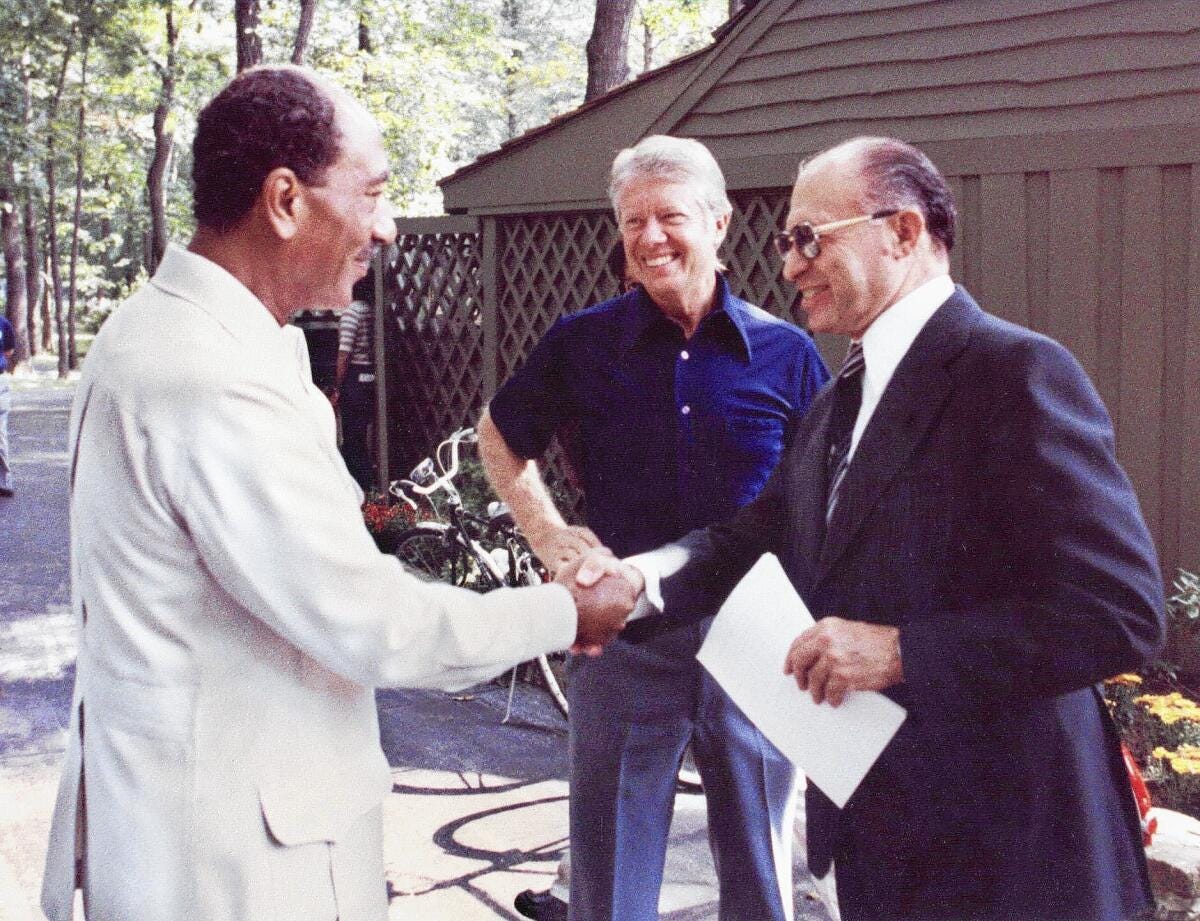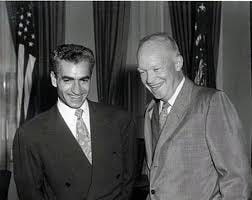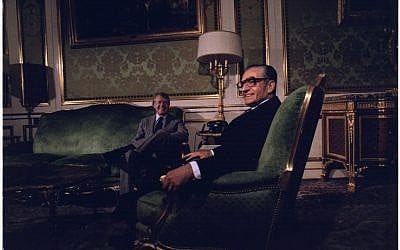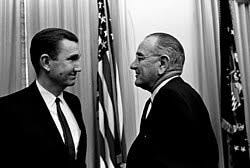Islamo-Communism
On January 20, 1977, President Jimmy Carter was inaugurated. He was handed a gift, cultivated by the hard work, yet imperfect policies, of previous presidents and their administrations. That gift was two pillars of stability for U.S. foreign policy in the Middle East: Israel and Iran.
Yes, you read that right. Israel and Iran. The two countries that have been enemies ever since. It will shock younger people to learn that Israel and Iran were once our two top allies in the Middle East. Ask Middle East scholars and they’ll tell you. Israel and Iran were our two top allies in the region, period. I know it’s hard to believe, but it’s true.
When Jimmy Carter left the presidency merely four years later, Iran was no longer our ally. It had become our worst enemy in the Middle East. The country, Iran, that in January 1977 had viewed America as its best friend and benefactor now burned U.S. flags in the streets and denounced us as “the Great Satan” and today calls for the crucifixion of President Trump - while still trying to build a nuclear bomb to wipe Israel off the face of the earth and destroy America. The difference could not be more dramatic.
How did this happen? The answer is Democrat President Jimmy Carter and his failed intelligence “advisors.” Carter and his administration let the moderate Shah of Iran fall, to be replaced by the Ayatollah Ruhollah Khomeini, and the rest is history.
You’ll find conflicting views in the “fake news” about how that happened - but here’s MY view of the truth based on a balanced review of the facts - I have linked articles I used for this newsletter. If I get anything wrong - please send me an email and provide me with evidence of the contrary.
The former Shah of Iran, Mohammad Reza Pavlavi, was America’s best friend in the Middle East, bar none. He was also a liberalizing force in Iran, albeit a gradualist: he believed too much change too fast would result in exactly what resulted.
Mohammad Reza Pahlavi, the last Shah of Iran, was raised in a family that, while Muslim, also embraced a blend of traditional and modern influences. He was educated in Switzerland and later at the Military College of Tehran, reflecting his father's efforts to modernize and Westernize Iran. While the Pahlavi dynasty generally promoted a secular approach to governance, Islam, particularly Twelver Shia Islam, was still a significant part of national identity and culture. They were considered moderates, however, not radicals - just like the Crown Prince Mohammed bin Salman of Saudi Arabia, today.
Democrat President Jimmy Carter betrayed the Shah, and Iran, and in doing so let countless other countries fall to Communism and other totalitarians. It may be that his one term is the darkest period in American history. That’s why he’s considered the worst President in history. And the consequences keep rolling on.
At the beginning of Carter’s presidency, in 1977, the United States and Iran were allies. Carter called Iran “an island of stability in one of the more troubled areas of the world” during a visit to Tehran and maintained a strategic relationship with the Shah of Iran, Mohammed Reza Pahlavi.
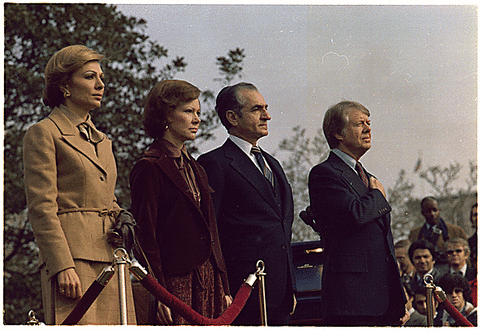
The Shah of Iran, Mohammad Reza Pahlavi, was initially installed by the British and Soviet forces in 1941 after they invaded and forced his father, Reza Shah, to abdicate power - because they said he was pro-Nazi.
From 1941-1951, there were several Prime Ministers appointed by the Shah in Iran - while Pahlavi remained the Shah of Iran.
Mohammad Mosaddegh was appointed as Prime Minister of Iran in 1951, not personally elected. He was appointed by the Shah of Iran after his National Front won a majority of seats in the 16th parliamentary election.
Mosaddegh was the Prime Minister of Iran from 1951 to 1953, while Mohammad Reza Pahlavi was the Shah of Iran. Mosaddegh’s stated goal was to nationalize the Iranian oil industry, which threatened Western oil interests.
William Knox D'Arcy, a British businessman, played a crucial role in establishing the Iranian oil industry by securing a concession to explore for oil in 1901 and subsequently discovering oil in 1908. This led to the formation of the Anglo-Persian Oil Company (later Anglo-Iranian Oil Company), marking the beginning of Iran's modern oil industry. The Anglo-Persian Oil Company (APOC) was established in 1909 to commercialize the oil discovery.
D’Arcy was the first Westerner to discover the oil-production potential of the Middle East and the West actually built the Middle East oil industry. Mosaddegh wanted to take control of that and the West wasn’t having it. They built it - they made it profitable - and they wanted to control it.
In 1953, the United States (through the CIA) and the United Kingdom (through MI6) orchestrated a coup to overthrow Prime Minister Mohammad Mosaddegh. Judging Mosaddegh to be unamenable and fearing his alliance with, and the growing influence of, the Communist Tudeh party, UK prime minister Winston Churchill and the Eisenhower administration decided in early 1953 to overthrow Mosaddegh.
The coup resulted in the removal of Communist-sympathizer Mosaddegh and the reinstatement of the moderate, Mohammad Reza Pahlavi, as Shah, solidifying his power and paving the way for his long rule.
Under the reign of Shah Mohammad Reza Pahlavi, from 1941 to 1977, Iran experienced a period of significant economic development and modernization. Increased oil revenues (through collaboration with the West) played a significant role in funding development projects in Iran and led to rapid economic expansion. By 1977, oil revenues reached $20 billion per year, representing 79% of the Iranian government's total revenue.
In November 1977, President Carter and First Lady Rosalynn Carter hosted the Shah and his wife, Empress Farah Pahlavi, at the White House for a State Visit.
As if a light were switched off, the Shah of Iran, Mohammad Reza Pahlevi, portrayed for 20 years as a progressive modern ruler by Islamic standards, was suddenly, in 1977-1978, turned into a foaming at the mouth monster by the international left-wing media.
The Shah’s arrival sparked a massive protest between pro and anti-Shah factions on the Ellipse that injured more than one hundred demonstrators and police officers.
President Reagan later stated that the Carter administration’s misguided policies in Iran caused the fall of the late Shah, calling it a historical stain in American history.
Carter effectively undermined the Shah’s power. Carter himself admitted to following the duplicitous advice of U.S. Ambassador Sullivan, who was viewed as deceitful and dangerously misguided.
It came to be well-acknowledged that the political uprising against the Shah had Carter’s backing, which ultimately led to his removal from power. This policy miscalculation not only caused the Shah’s downfall but also plunged Iran into chaos, leaving it a victim of history.
Carter observed the 1979 crisis in Iran from a distance, while his State Department displayed overt hostility toward the Shah. The Shah soon realized that neither Carter nor the U.S. had any intention of supporting him, and he described America’s policy as delusional. At the height of the turmoil, the Shah was abandoned.
Carter lacked a true understanding of the crisis or its catastrophic consequences. He failed to make sound decisions and did not grasp the irreversible damage his policies caused. Carter was advised to demand the Shah leave Iran immediately and to align with the Shia Mullahs. Meanwhile, U.S. intelligence agencies were disorganized and at odds with each other. Most notably, the CIA failed to predict the 1979 upheaval or the disastrous rise of the Mullahs in Iran, cementing Carter’s role as a key figure in the fiasco.
Carter’s constant moralizing, cloaked in populism, often bordered on naivety. He claimed to act in the name of God but appeared out of touch with reality. The Shah kept asking, “Why is the CIA so intensely active against me?”
The CIA was still concerned about the rise of pro-Soviet elements in Iran, specifically the Tudeh Communist Party, and their potential influence in the Shah’s regime. The Tudeh Party of Iran, meaning "People's Party" in Persian, was a Marxist-Leninist Communist party with a significant historical presence in Iran. Formed in 1941, it advocated for workers' rights, social justice, and national independence. The party was heavily influenced by Soviet Communism.
So, IMHO, it looks like the CIA decided that Islamic leadership would be better able to assert power over the rebels in Iran and control the Communists in Iran and that the CIA would still be in charge. THE CIA WAS WRONG. The radical Shia Islamists took over and have been ever since. Obama and Biden then helped them become stronger.
Later the CIA said: “Had we shown more vigilance, America’s policy during Iran’s turmoil could have been different.”
Carter quickly deemed the Ayatollah Khomeini a “sacred” figure, describing him as a religious and moderate leader.
Jimmy Carter launched a deliberate campaign to undermine the Shah of Iran. The Soviets and their left-wing apparatchiks would coordinate with Carter by smearing the Shah in a campaign of lies meant to topple his throne. The result would be the establishment of a Marxist/Islamic (red-green axis) state in Iran headed by the tyrannical Ayatollah Ruhollah Khomeini. The Iranian revolution, besides enthroning one of the world's most oppressive regimes, would greatly contribute to the creation of the Marxist/Islamic terror network challenging the free world today.
At the same time, a senior Iranian diplomat in Washington observed, "President Carter betrayed the Shah and helped create the vacuum that will soon be filled by Soviet-trained agents and religious fanatics who hate America."
Under the guise of promoting" human rights," Carter made demands on the Shah while blackmailing him with the threat that if the demands weren't fulfilled, vital military aid and training would be withheld. This strange policy, carried out against a staunch, 20 year Middle East ally, was a repeat of similar policies applied in the past by US governments to other allies such as pre-Mao China and pre-Castro Cuba.
Carter started by pressuring the Shah to release "political prisoners" including known terrorists and to put an end to military tribunals. The newly released terrorists would be tried under civil jurisdiction with the Marxist/Islamists using these trials as a platform for agitation and propaganda. This is a standard tactic of the left then and now. The free world operates at a distinct dis-advantage to Marxist and Islamic nations in this regard as in those countries, trials are staged to "show" the political faith of the ruling elite. Fair trials, an independent judiciary, and a search for justice is considered to be a western bourgeois prejudice. Sound familiar?
Carter pressured Iran to allow for "free assembly" which meant that groups would be able to meet and agitate for the overthrow of the government. It goes without saying that such rights didn't exist in any Marxist or Islamic nation. The planned and predictable result of these policies was an escalation of opposition to the Shah, which would be viewed by his enemies as a weakness. A well-situated internal apparatus in Iran receiving its marching orders from Communists in the Kremlin egged on this growing opposition.
By the fall of 1977, university students, working in tandem with a radical Shia clergy that had long opposed the Shah's modernizing policies, began a well coordinated and financed series of street demonstrations supported by a media campaign reminiscent of the 1947-1948 campaign against China's Chiang Ki Shek in favor of the "agrarian reformer" Communist Mao tse Tung.
At this point the Shah was unable to check the demonstrators, who were instigating violence as a means of inflaming the situation and providing their media stooges with atrocity propaganda. Rumors were circulating amongst Iranians that the CIA under the orders of President Carter organized these demonstrations.
In November 1977, the Shah and his Empress, Farah Diba, visited the White House where they were met with hostility. They were greeted by nearly 4,000 Marxist-led Iranian students, many wearing masks, waving clubs, and carrying banners festooned with the names of Iranian terrorist organizations. The rioters were allowed within 100 feet of the White House where they attacked other Iranians and Americans gathered to welcome the Shah. Only 15 were arrested and quickly released. Sound familiar?
Inside the White House, Carter pressured the Shah to implement even more radical changes. Meanwhile, the Soviets were mobilizing a campaign of propaganda, espionage, sabotage, and terror in Iran. The Shah was being squeezed on two sides.
Khomeini, a 78-year-old Shi'ite cleric whose brother had been imprisoned as a result of activities relating to his Iranian Communist party affiliations, and who had spent 15 years in exile in Ba'th Socialist Iraq, was poised to return.
In exile, Khomeini spoke of the creation of a revolutionary Islamic republic, which would be anti-Western, Communist, and with total power in the hands of an Ayatollah. In his efforts to violently overthrow the government of Iran, Khomeini received the full support of the Soviets.
The head of the Iranian Communist Tudeh Party, in exile in East Berlin, stated, "The Ayatollah's program coincides with that of the Tudeh Party." Khomeini's closest advisor was well known as a revolutionary with close links to Communist intelligence.
American Democrat leaders were also supporting Khomeini. Ramsey Clark, who served as Attorney General under former President Lyndon B. Johnson, urged the US government to take no action to help the Shah so that Iran "could determine it's own fate." Clark played a behind the scenes role influencing members of Congress to not get involved in the crisis.
Khomeini was allowed to seize power in Iran and, as a result, we are now reaping the harvest of anti-American and anti-Israeli fanaticism and extremism. Khomeini unleashed the hybrid of radical Shia Islam and Marxism that has spawned suicide bombers and hijackers.
Iranian protests against the Shah’s leadership prompted a revolution which ousted him from power in early 1979 and reinstated Islamic fundamentalist Ayatollah Khomeini to power.
Anti-American sentiment swelled in Iran, particularly after President Carter allowed the exiled Shah into the United States for medical treatment in October 1979. These tensions reached a breaking point less than two weeks later.

On November 4, 1979, Iranian students seized the U.S. Embassy in Tehran and took 66 American diplomats and military personnel hostage, sending the U.S. into a full-scale diplomatic crisis that lasted for 444 days.
Days turned into weeks, months into a year. Throughout negotiations, President Carter tried to avoid direct conflict with Iran, prioritizing the safe return of the hostages over decisive action.

One rescue attempt, Operation Eagle Claw, was aborted due to equipment failure; unfortunately, a helicopter crashed during departure, killing eight service members.
Ultimately, Carter and his team negotiated the release of the 52 remaining hostages, but to Carter’s dismay, they were not released until after Ronald Reagan took the Oath of Office on January 20, 1981.
One week later, President Reagan celebrated the brave American hostages at the White House with a massive South Lawn ceremony, parade, fireworks, and a reception.

While Carter is now gone, his policies continued on in what has been described as “Carter 2” (Obama) and “Carter 3” (Biden) regarding the Islamic Republic of Iran. The world first faced the rise of Islamic radicalization during Carter’s era, it grew under Obama & Biden and the battle against Islamo-Communist (the red-green axis) terrorism continues to this day.
These are the policies that President Trump inherited and is attempting to fix.
My work is free and supported by your generous donations. Thank you to all who have donated in the past. I truly appreciate your generosity!
If you like my work, you can fund me by becoming a paid subscriber on Substack, donate by credit card here or you can send me a check to Peggy Tierney, PO Box 242, Spooner, Wisconsin 54801- or just send me a note or a card! I love hearing from you

